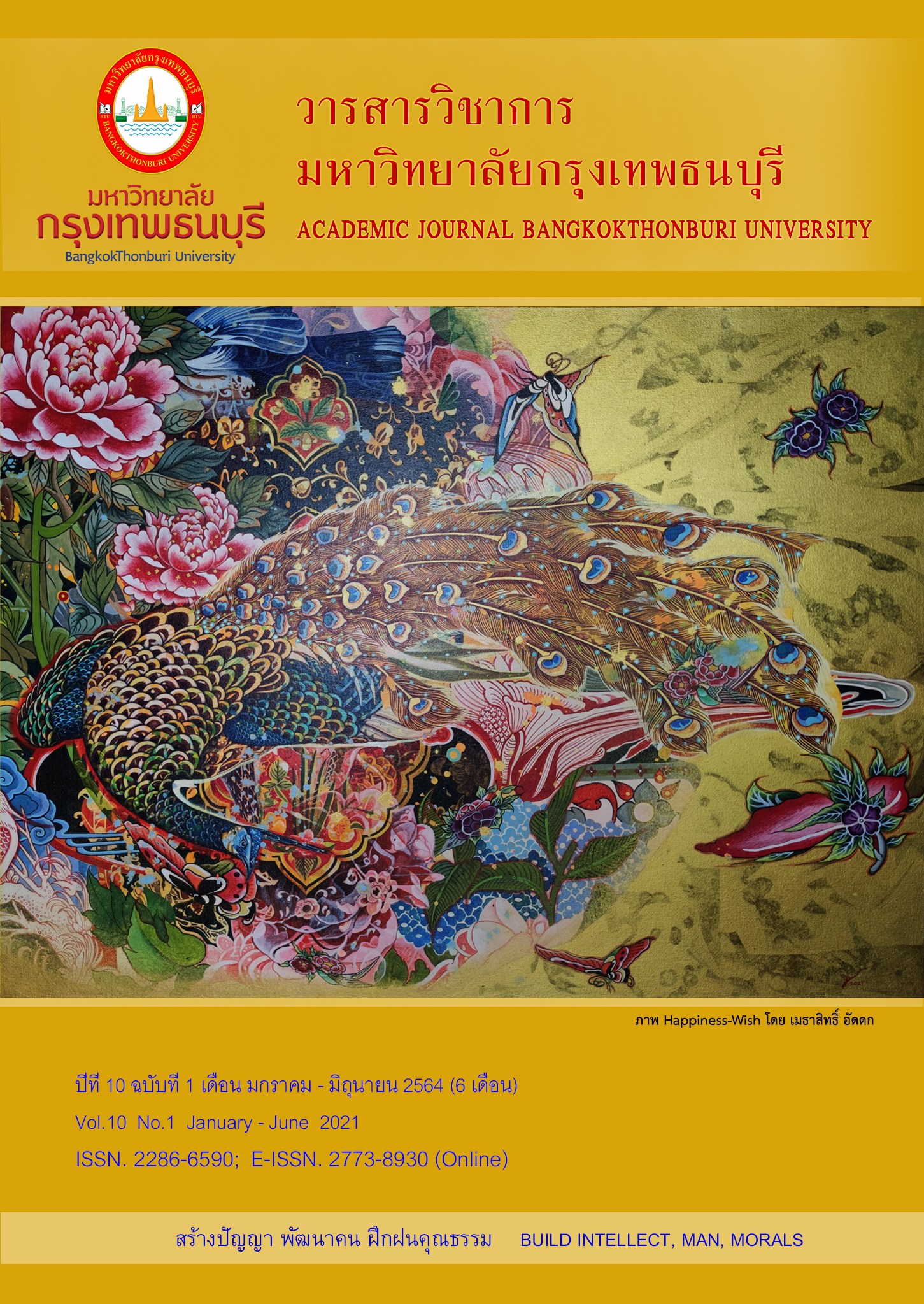The trend of Chinese tourists' demand towards the distribution model of Thai tourism industry products
Main Article Content
Abstract
The purpose of this research was to study the trend of Chinese tourists' demand towards the distribution model of Thai tourism industry products. Is a quantitative research from the 250 samples.
The research found that
1. The distribution model of tourism industry products found that respondents gave importance to the overall distribution of tourism industry products at a high level. By giving priority to the service through the highest representative, followed by Providing services through the shop, providing services to customers' homes or locations that customers want. For electronic services Respondents gave the least importance.
2. The demand of Chinese tourists does not affect the distribution model of Thai tourism industry products. With an influence of 8.8 percent. Another 91.2 percent comes from the influence of other variables other than this study.
Article Details

This work is licensed under a Creative Commons Attribution-NonCommercial-NoDerivatives 4.0 International License.
References
ดารา ทีปะปาล. (2542). พฤติกรรมผู้บริโภค. กรุงเทพฯ: รุ่งเรืองสาส์นการพิมพ์.
บุญเลิศ จิตตั้งวัฒนา. (2560). การจัดการทรัพยากรมนุษย์ในอุตสาหกรรมการท่องเที่ยว. นนทบุรี: เฟริ้นข้าหลวง พริ้นติ้งแอนด์พับลิชชิ่ง
ศิริวรรณ เสรีวงศ์ และคณะ. (2541). การวิจัยธุรกิจ. กรุงเทพมหานคร: เพชรจรัสแสงแห่งโลก. ธุรกิจ.
ศิริวรรณ เสรีวงศ์ และคณะ.. (2546). การบริการการตลาดยุคใหม่. กรุงเทพฯ: ธรรมสาร.
สุพฤกษา ท่าสระ. (2551). พฤติกรรมและการตัดสินใจซื้อเครื่องสำอางสมุนไพรของประชาชนในจังหวัดพระนครศรีอยุธยา. พระนครศรีอยุธยา: มหาวิทยาลัยราชภัฏพระนครศรีอยุธยา.
เสรี วงษ์มณฑา. (2548). กลยุทธ์การตลาด: การวางแผนการตลาด. กรุงเทพฯ: ธีระฟิล์มและไซเท็กซ์.
อิสระ บุญยัง. (2560). การถือครองที่อยู่อาศัยของคนต่างชาติ. หนังสือพิมพ์ฐานเศรษฐกิจ.
อดุลย์ จาตุรงคกุล. (2543). พฤติกรรมผู้บริโภค. (พิมพ์ครั้งที่ 6). กรุงเทพฯ: โรงพิมพ์.
อดุลย์ จาตุรงคกุล. (2546). การบริหารการตลาดกลยุทธ์และยุทธวิธี. กรุงเทพฯ: สํานักพิมพ์.
Assael, Henry. (1998). Consumer Behavior and Marketing Action. (6th ed.). Cinintati, Ohio.
Engel, James F. Kollat, David T. Blackwell, Roger D. (1968). Consumer Behavior. New York: Holt, Rinehart and Winston, Inc.Engel.
Freud, S. (1964). Group Psychology and The Analysis of The Ego Sigmund Freud. New York: Bantam Books.
Kotler, Philip. (1997). Marketing management: analysis, planning, implementation and control. (9th ed.). New Jersey: A simon & Schuster Company
Kotler, Philip. (2000). Marketing Management. (10th ed.). New Jersey: Prentice – Hall.
Loudon and Albert J. Della Bitta. (1993). Consumer Behavior: Concepts. New York: McGraw – Hill International, Inc.
Malhotra, Y. (1998). Knowledge management for the new world of business. Journal for Quality and Participation, 21(4), 58-60.
Onkvisit, S., & Shaw, J. J. (1994). International Marketing: Analysis and Strategy. (3rd ed.). New Jersey: Prentice-Hall.
Schiffman, L. G., & Kanuk, L. L. (1994). Consumer behavior. (5th ed.). Englewood Cliffs, N. J. : Prentice-Hall.
Walters C. Glenn. (1978). Consumer Behavior: Theory and Practice. (3 rd. ed.). New York: Prentice-Hall.


